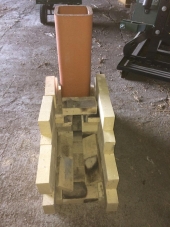








find religion! church
kiva! hyvä! iloinen! pikkumaatila
get stung! beehives
be hospitable! host-a-hive
be antisocial! facespace
 2
2




 1
1









To this end the prairie has been mowed regularly in the fall and selectively burned in 2000 and in 2008 with help from the Nature Conservancy, the City of Port Townsend, and the Port Townsend Fire Department. The following growing season after burning has yielded the immediate reward of a spectacular bloom.
QuickBooks set up and Bookkeeping for Small Businesses and Farms - jocelyncampbell.com
















Dennis Lanigan wrote:In regards to planting alders: I could post pictures of canary grass growing right up to stands of alder if you'd like. I'm not saying you shouldn't try it but that's my experience. I would plant Garry Oaks because they are allelopathic (and fire resistant).
Maybe planting seeds/bulbs, establishing live plants, and then burning is a solution? Or even planting after?
From http://mdc.mo.gov/your-property/problem-plants-and-animals/invasive-plants/reed-canary-grass-control
This site advises against weeding, tilling, cutting, grazing, herbicides for RCG control. It does say this works:
"Introduction of competitive species: probably few native species can compete with reed canary grass in wetlands if burning is not used also. It reportedly will even crowd out cattails. Prescribed burning allows native species that are present or seeded-in to compete successfully."

|
Does this tiny ad smell okay to you?
turnkey permaculture paradise for zero monies
https://permies.com/t/267198/turnkey-permaculture-paradise-monies
|





